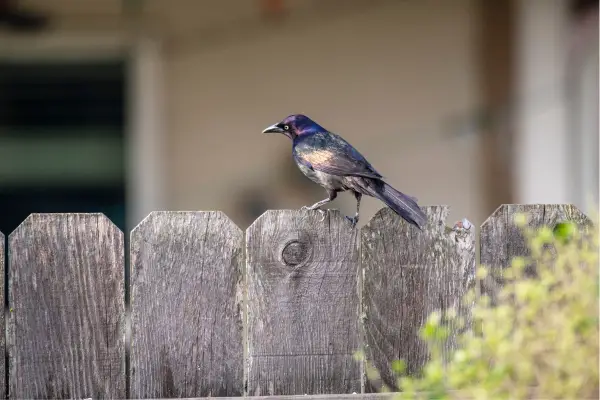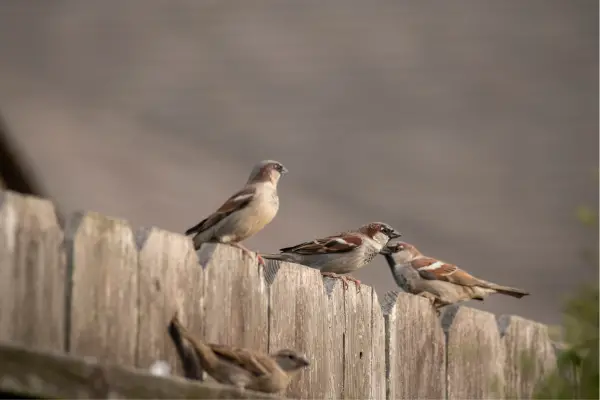Attracting Birds to Your Backyard
Do you adore the musical chirps of birds and wish to invite more of our feathered friends into your outdoor space? Attracting wild birds to your backyard can be simple and rewarding when done properly.
With a few basic tips, you’ll have lovely birds like cardinals, chickadees, finches, and more flocking to your yard to sing sweet songs and entertain you with their antics.
Why Attract Birds to Your Yard?
Benefits of a Bird-Friendly Backyard
There are many excellent reasons to welcome birds into your yard, including:
- Enjoyment – Watching colorful, lively birds at feeders or fluttering through plantings lifts the spirit for many people. It creates a relaxing nature spectacle to observe right at home.
- Pest control – Many common backyard birds eat troublesome insects like mosquitoes, ants, grubs and more. Put up nest boxes to encourage insect-loving birds to stay and raise young.
- Pollination – Hummingbirds dart from flower to flower, cross-pollinating blossoms as they collect nectar. Orioles, finches and others also aid pollination as they gather fruits, berries and seeds.
- Environmental quality – More birds in your local area increases biodiversity and the overall health of the natural ecosystem. Providing proper food, water and shelter helps counter habitat loss from development.
Backyard Birds Are in Decline
Many formerly common bird species like sparrows, blackbirds, meadowlarks and more have suffered severe population declines in recent decades due to habitat loss, climate change, pesticides, outdoor cats and other human-related factors according to audubon.org [1].
By reinventing our outdoor spaces to cater to birds’ basic needs, we can help reverse distressing population crashes for species that were once a typical sight. Invite birds into your yard this season to do your small part for conservation right at home.

Getting Started with Bird-Friendly Landscaping
Transforming your basic backyard into a birdwatcher’s paradise does not require fancy equipment or excessive effort. Follow these fundamental tips to naturally attract more birds:
Provide Food
- Install tube feeders, hopper/platform feeders and ground feeders. Offer sunflower seeds, thistle, millet, peanuts, suet cakes based on birds you want to draw in.
- Include fresh fruit pieces, mealworms, nectar in feeders/trays for diversity.
- Choose seed/suet feeders with weight-activated perches to prevent food waste from squirrels/large birds.
- Place feeders at various heights & locations for species preferences.
- Maintain cleanliness to avoid disease transmission.
Supply Water
- Use a birdbath, fountain or make a DIY water garden from a tray/bowl. Change water 1-2 times a week.
- Add a mister to provide drinking and bathing water. Birds need to preen feathers to retain body heat.
- Include slopes, rocks and shallow areas for accessibility.
Offer Shelter
- Evergreens, dense bushes and brush piles provide protection from the elements and predators.
- Nest boxes and roosting pouches offer cavities for nesting and overnight refuge.
- Allow leaf litter and dead wood to accumulate naturally.
Choose Bird-Friendly Plants
- Native plants suit local birds’ preferences for food and shelter. See audubon.org’s native plants database [2].
- Berry producers like dogwoods and hollies are favorites.
- Nectar sources like native wildflowers attract hummingbirds and orioles.
- Grasses and seeds entice sparrows, juncos and more.
Strategic Placement Matters
Now that you know the four basic elements to include, strategically place them around your yard with these tips:
- Situate feeders, birdbaths and nest boxes within view of windows/seating areas for easy birdwatching.
- Avoid locating feeders too close to bushes where cats may hide.
- Face nest boxes towards areas with trees/poles suitable for flight path and takeoffs.
- Place thistle feeders up high for goldfinches, suet feeders low for woodpeckers.
- Arrange native plants together for an easy foraging environment.
Follow this comprehensive plan to guarantee birds readily discover and benefit from the full range of amenities you’ve designed just for them in your lush backyard oasis.

5 Top Bird Feeders to Try Our Recommendations
With so many bird feeder styles and models available from $10 budget picks to $150 technologically tricked out options, selecting the best feeders for your needs can be challenging. We evaluated expert reviews from Audubon, Birds and Blooms, the Cornell Lab of Ornithology and other sources [3][4][5] to pick these top-rated feeders great for beginners.
- Squirrel Buster Classic Squirrel-proof Bird Feeder
- Perky-Pet Ripple Glass Hummingbird Feeder
- Woodlink Going Green Platform Bird Feeder
- Nature’s Way Bird Products Cedar Bluebird House
- Songbird Essentials SEEDCAT Ground Feeder
How to Attract Specific Backyard Birds
While following the general birdscaping guidance ensures a lively yard, you can further customize to draw in certain desirable birds. Learn the go-to feeds and habitat features to entice each species.
- Goldfinches – Nyjer thistle in specialty feeders, standing dead trees for perching
- Chickadees – Black oil sunflower seeds, nest boxes and roost pouches
- Woodpeckers – Suet feeders, dead snags on trees
- Hummingbirds – Nectar feeders, tubular red flowers
- Orioles – Orange halves, jelly, nectar, fruiting trees
- Bluebirds – Live mealworms, nest boxes with exact 1 9/16” hole
Cats and Birds: Safely Coexisting
Outdoor and feral cats kill billions of wild birds in the U.S. every year, making cat predation by far the largest human-linked threat according to the Smithsonian Migratory Bird Center [6]. Yet both cat lovers and bird lovers can take measures to allow peaceful coexistence.
If you have an outdoor cat, follow these tips to help protect backyard birds visiting your yard:
- Cut claws regularly to reduce catching ability
- Use bibs/collars with bird-saving bells or bright colors
- Keep cats indoors during fledging season in spring
- Install sheltered bird feeders/housing that cats can’t access
- Construct secure outdoor “catios” for your cats to enjoy
Follow an IPM Approach
Hoards of birds descending on your yard for easy meals unfortunately also attracts squirrels stealing seed, rats taking up residence and birds leaving waste below feeders. Balance naturally controlling pests while still nurturing birds with IPM.
IPM tactics include:
- Pruning nearby trees to prevent ambush by squirrels and larger birds
- Installing squirrel baffles on poles and hanging feeders with metal guards
- Placing feeders away from structures & frequently cleaning below them
- Applying bird-safe insecticidal soap to deter ants without harming birds
- Allowing natural predators like hawks and owls to control rodent issues
Ideal Food and Shelter by Season
Birds have differing needs throughout the year as seasons and life cycles progress. Follow this calendar to provide the ideal birdscaping features each season to maximize activity year-round.
Spring
- Nest boxes for breeding birds
- Fibrous plant materials for nest building
- Live mealworms to feed offspring
- Nectar for arriving hummingbirds
- Water for bathing and drinking
Summer
- Continual food as baby birds fledge
- Water to prevent heat stress
- Brush piles to hide young birds
Fall
- Seed and fruit Bearing plants
- Cover as birds molt feathers
- High energy suet and nuts
- Roost boxes for winter prep
Winter
- Heated birdbaths
- Insulated roosting pouches
- Black oil sunflower, thistle
- Sheltered, squirrel-proof feeders
From the essential elements to specialized tactics for bird lovers, utilize the complete birdscaping knowledge presented here to make your backyard irresistibly attractive for a fascinating array of wild birds. Soon you’ll have brilliant feathers, sweet birdsongs and lively activity just outside your window to brighten every day.


